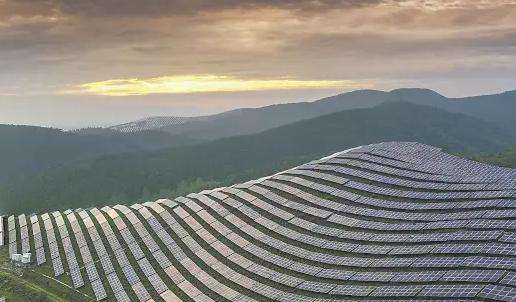There is no fixed concept of crop planting pattern, and it can generally be expressed as a technical method in the process of planting and cultivating crops. Here are examples of several crop planting patterns:
1. Water-saving and high-yield wheat and corn multiple planting model.
Wheat and corn multiple planting is a widely used planting model in production. This model can give full play to the role of agricultural machinery, adopt scientific management methods, and also achieve the effect of water conservation and high yield.
Wheat is sown at equal row spacing depending on the high yield requirements of the variety. After wheat harvest, corn is sown manually or by machine in equal spacing (60~70cm) or in wide and narrow rows. (80cm+40cm). Wheat is suitable for precision or semi-precision sowing at the beginning of October, with a taBasic seeding rate from 900,000 to 1.8 million per hectare. Choose compact corn varieties and sow wheat on time after harvest. Generally, sowing should be completed by June 10. Corn planting density varies from 67,500 to 82,500 plants per hectare. In this model, wheat and corn do not have a period of coexistence and there will be no competition for glory, fertilizer and water. For wheat, select high-yielding varieties with medium maturity, short stems, strong firmness, disease resistance, cold resistance and high quality. In addition to selecting mid-early, high-yielding and high-quality corn varieties, corn should be selected. from early and mid-ripe varieties which are compact, disease resistant, lodging resistant, high quality and high yielding mature varieties.
2. Interplanting onions with cotton, economical planting methodome in water and efficient
Interplanting onions with cotton is more advantageous in terms of time and space. Onions are usually planted in early November. when the frost has passed, the cotton has stopped growing and there is plenty of time in between to fertilize and prepare the soil. Onion plants are small, so transplanting cotton in mid-May next year will have little impact on cotton growth. Selection of hybrid cotton will be more conducive to high cotton yields. The onions and cotton are covered with a film of mulch and wheat straw respectively to preserve humidity and save water. This model has good economic advantages: the net income per mu can reach about 4,000 yuan. Field management is convenient, after the onions are harvested, the cotton is planted in wide and narrow rows, and the side rows have significant advantages. In this mode, the onions are planted at the beginning of November and the rows are reserved for interplanting. 2 rows are reserved every 6 rows (6/2 type). The onion row spacing is 18cm, the cotton onion spacing is 10cm, and the width is 10cm. 160 cm, and the cotton row spacing is 50 cm (50 cm for narrow rows and 50 cm for 110 cm wide rows). Transplant the cotton in mid-May. The onions are harvested at the beginning of June. The frosts arrive at the end of October and the poplars are uprooted. Replant the onions in early November. So back and forth.
3. Water saving model for dry farming “One, two, three, four” for wheat and corn.
“One, two, three, four” model for wheat and corn but. is a unique cultivation model of wheat and corn in the dry farming area of northern China. The main features of the technical assembly model within the framework of the two-cu planting systemltures are low number of operations, low cost of machinery and equipment and obvious. time-saving effect. The main content of this pattern is to focus on one main line, adhere to two fundamental points, make three connections, and grasp the four links. Among them, the main focus is on the integration of wheat and corn. Adhering to two fundamental points of agricultural technology, namely adhering to straw mulching technology and low (no) tillage conservation tillage technology, the aim is to store sky water and d improve the rate of use of precipitation. After the three connections are well made, it will be In the process of integrated production of wheat and corn, attention should be paid to the connections between wheat varieties and corn varieties, between planting methods and varieties, and between agricultural measures and agricultural machinery. The four linkss to be understood are: firstly, selecting drought-resistant and water-saving varieties to achieve biological water conservation; second, adopt appropriate sowing methods to ensure that all seedlings are sown; third, implement global optimization of fertilization; to achieve high water and fertilizer efficiency.
Use; Fourth, strengthen field management and achieve the goals of the group structure.
Part of the content is taken from “Water-saving Planting Model in North China”














